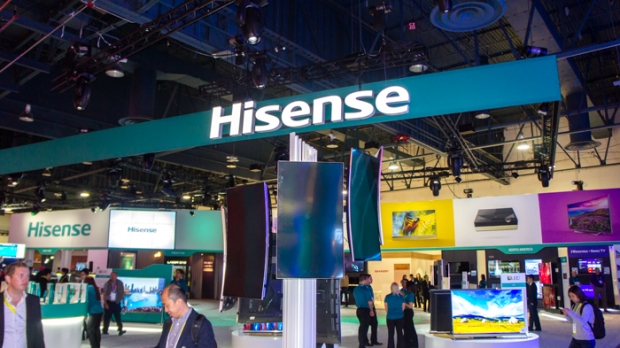The magazine highlights the conventional naming schemes that have been chosen to represent commonplace industry standard resolutions for consumers. The most familiar is “Full HD,” also known as 1920-horizontal-by-1080-vertical resolution (see: Blu-ray disc standard). The newer term is “Ultra HD,” also known as 3840-horizontal-by-2160-vertical resolution (see: 4K and UHD Blu-ray standards). The newest, and perhaps sensationally appropriate, is “Full Ultra HD,” also known as 7680-horizontal-by-4320-vertical resolution (see: 8K) – also known as “FUHD.”
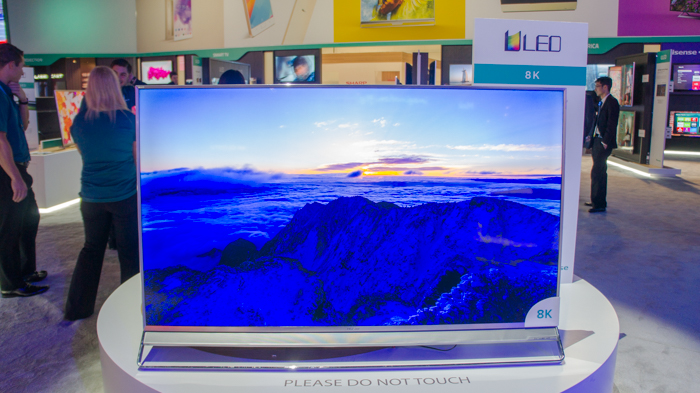
Yes, there are literally so many pixels that the official term for 8K is “FU-HD, that’s how many pixels my television has.” If you don’t believe me, see for yourself.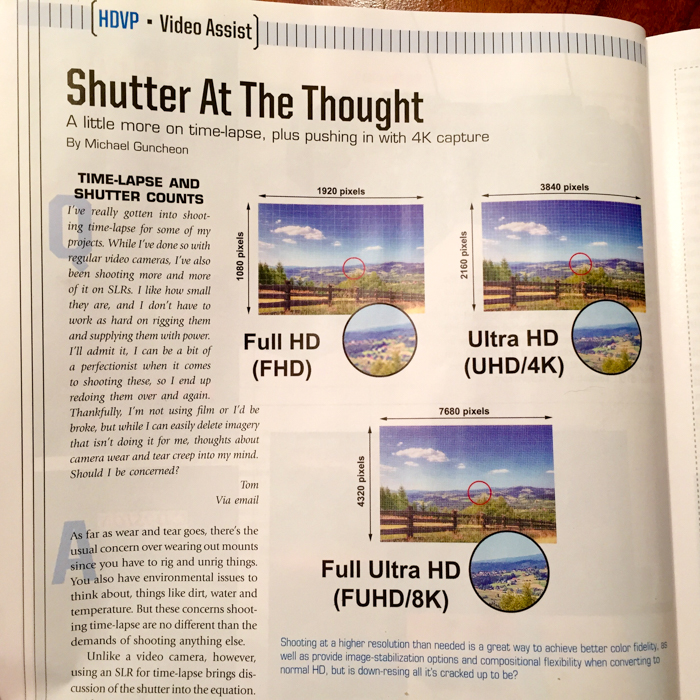
Source: HDVideoPro Magazine, Vol. 10 No. 1, February 2016, p16
Last week on the Las Vegas Convention Center show floor, Chinese electronics giant Hisense demonstrated its 8K 98-inch behemoth, the MU9800U. This set features a 7680x4320p resolution – four times more pixels than 4K, and a Black Crystal Panel.
We have seen 8K display sets at electronics conventions over the past four years since at least IFA 2011 with Sharp’s first 8K LCD TV, but none of them have come close to providing the deep black levels that organic LEDs have been able to give the flagship sets released every year since. That could possibly change with Hisense’s ULED 3.0 technology. In short, ULED stands for “Ultra LED” and in comparison with Organic LED (OLED) technology it is reported to have indistinguishable black levels. OLED bottoms out at around 0.001 cd/m2, so this is quite an impressive feat.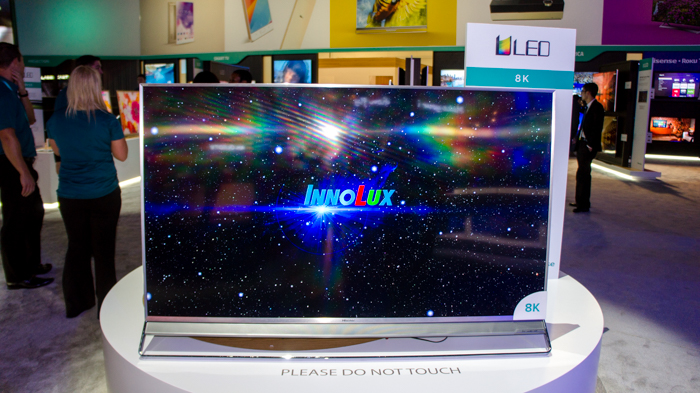
The company claims ULED is an LED backlight control technology “that uses small crystals roughly 5-20 nanometers in size to produce an enhanced picture. This technology is based on dynamic backlight control, local dimming and a high or wide color gamut to improve viewing experience.”
The display also has 600 micro dimming zones. Micro dimming is a software technique that can instantly decide whether to adjust lightness and darkness of a frame by adjusting individual cells in the LCD itself rather than the LEDs.
The MU9800U also boasts a High Color Gamut at 150 percent of the ITU Rec.709 specification and 85 percent of the ITU Rec.2020 specification.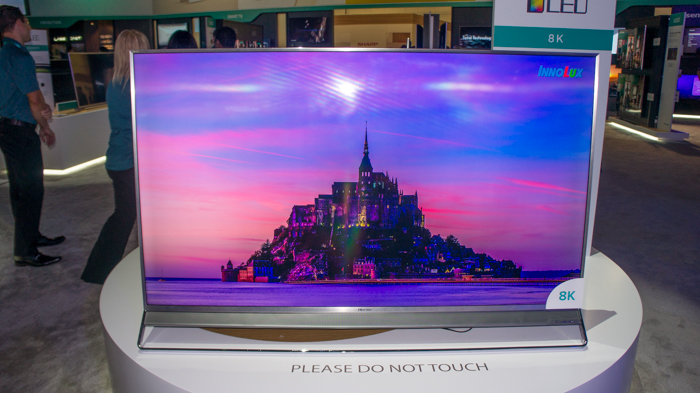
If you browse YouTube for 8K content, you’ll notice that this television set will be able to play a whopping eight clips by non-amateur videographers. They include Patagonia 8K, Ghost Towns in 8K, Norway in 8K, Saturn Timelapse in 8K, Haleakala National Park in 8K, Tokyo Timelapse Demo in 8K, Tokyo HDR Timelapse in 8K, and a Highway, Shipyard and Soccer Field in 8K.
Hisense is among China’s six largest TV manufacturers which also include TCL, Skyworth, Haier, Chang Hong and Konka. The company was on Forbes Magazine’s “Asia’s Top 50 Companies” in 2013 and has experienced a successful surge in revenue from 8.5 million GBP ($12.2 million) in 2013 to 18 million GBP ($25.9 million) in 2014. The company has projected revenues of around 32 million GBP ($46 million) for 2015.

